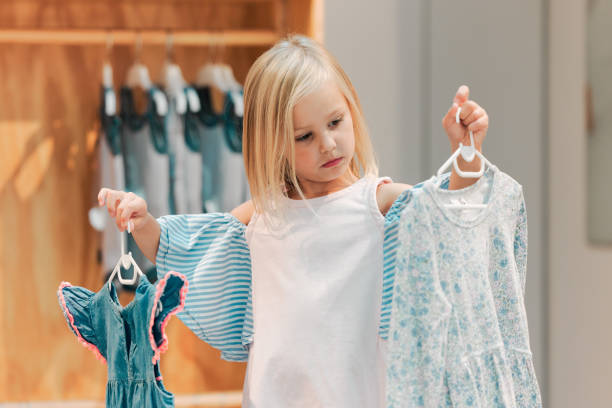
The interaction of colors in children’s apparel transcends simple aesthetics. Colors have a profound influence on a child’s feelings, actions, and general wellbeing. As parents and guardians, understanding the psychological impact of colors in Maria.B. Kids collection clothing can empower you to make informed choices when it comes to dressing your little ones. Read on to discover the fascinating psyche of kids and their relationship with colors that bring joy and happiness.
The Power of Colors on Children
The emotions and moods of youngsters are greatly influenced by colors. Psychologists have long investigated the relationship between human psychology and color, and this investigation includes children. Warm, vibrant hues like orange, yellow, and red are perfect for kids’ clothes since they are known to generate emotions of joy and vigor.
Conversely, soothing colors like blues and greens can have a calming impact, encouraging peace of mind and relaxation. Knowing the psychological effects of these hues can help parents dress their children in ways that enhance their general wellbeing while still expressing their individuality.
Choosing the Right Colors for Kids’ Clothes
Colors are important for children’s cognitive development in addition to their emotional health, regardless of whether you purchase clothing from foreign companies or browse for kids’ Pakistani dresses online in USA. Vibrant and striking hues arouse the sense of sight, improving concentration and focus. Including a range of colors in a child’s outfit helps with cognitive development in addition to making dressing more interesting.
Reds for Energy and Vitality
Red is a hue linked to passion, vigor, and excitement. Adding reds to a child’s outfit can inspire passion and imagination. Whether your child is wearing a bright dress or a playfully colored t-shirt, red can make them feel happy and lively.
Yellows for Sunshine and Positivity
Yellow radiates warmth and optimism, as it is the color of sunshine. By clothing in yellow, you can lift your child’s emotions and promote happiness. This color adds a splash of sunlight to their appearance, making it especially effective on gloomy days.
Blues for Calm and Serenity
Blue is a relaxing color that is frequently connected to the sky and the sea. When your child wears blue clothing, it can help to calm things down, especially when they are in stressful or overwhelming situations. It’s a great option for evening wear that promotes a calm transition to slumber.
Greens for Harmony and Balance
As a symbol of harmony and nature, green is a great hue for kids’ clothes. This color enhances stability and harmony, which benefits a child’s general emotional health. Adding green to their clothes can help them feel more connected to nature.
Pinks for Playfulness and Tenderness
Playfulness and tenderness are evoked by the color pink, which is commonly linked to femininity. This color can evoke feelings of warmth and affection, whether it’s paired with a charming T-shirt or a soft pink dress. Its loving and compassionate characteristics make it a favorite among many parents.
The Importance of Color Combinations
While individual colors have distinct psychological effects, the combination of colors can create a unique impact. Parents can experiment with color schemes to create a visually appealing and emotionally resonant wardrobe for their children.
Contrasting Colors for Stimulation
A child’s visual senses can be stimulated by combining contrasting colors, such as red and blue or yellow and green. This stimulates their cognitive growth in addition to creating visually striking ensembles.
Monochromatic Tones for Calmness
Different tones of the same color used in monochromatic color schemes can provide a soothing visual impact. This is particularly helpful if you want to create a more laid-back and quieter vibe.
Adapting to Developmental Stages
Children go through many developmental phases, and each is distinguished by special requirements and preferences. Comprehending these phases and modifying the color scheme correspondingly can enhance a peaceful atmosphere.
Soft pastel colors are frequently chosen for babies and toddlers because they reflect the loving and caring qualities of their early years. Children may grow to have strong tastes for particular colors or characters. Supporting their child’s developing personality can be achieved by parents who embrace these decisions while maintaining balance in the overall outfit.
Conclusion
In the world of children’s fashion, colors transcend mere aesthetics to become powerful tools for shaping emotions and well-being. By selecting outfits that align with the positive psychological impact of colors, you can contribute to fostering an environment of joy, happiness, and emotional balance for your little ones. So, the next time you’re shopping for your child’s wardrobe, consider not just the style but also the colors that will make their world a brighter, more delightful place.